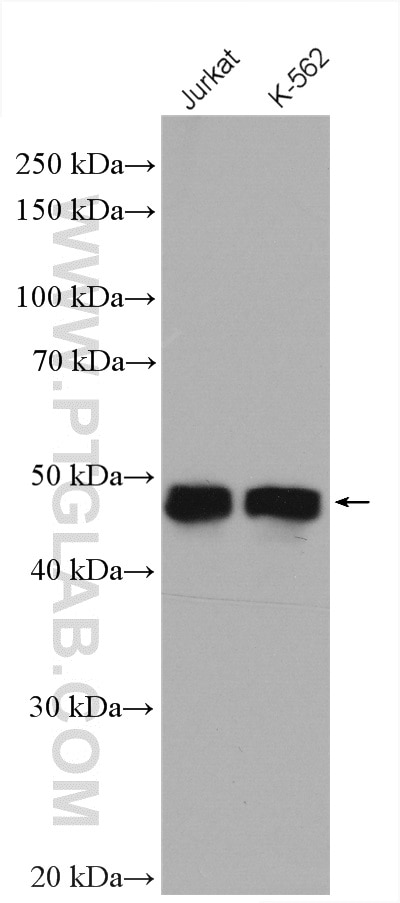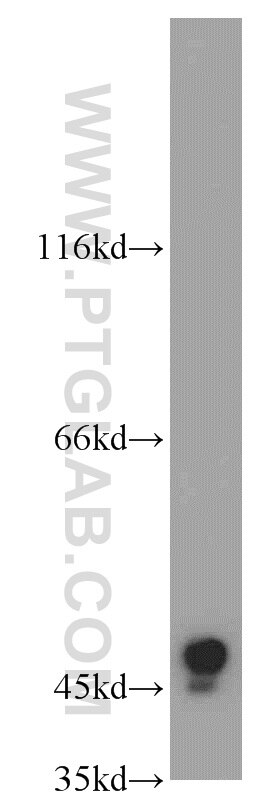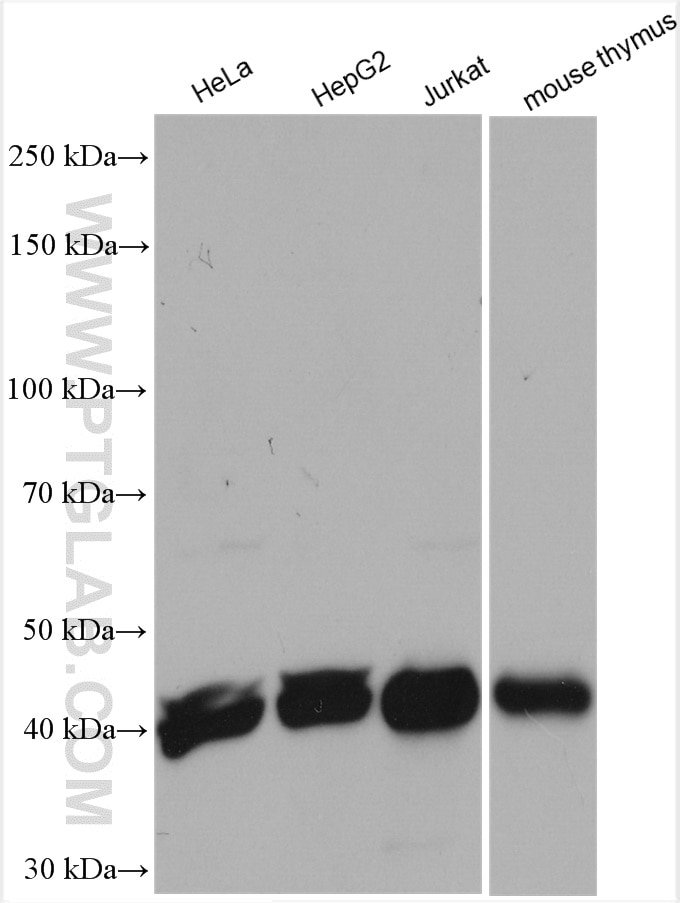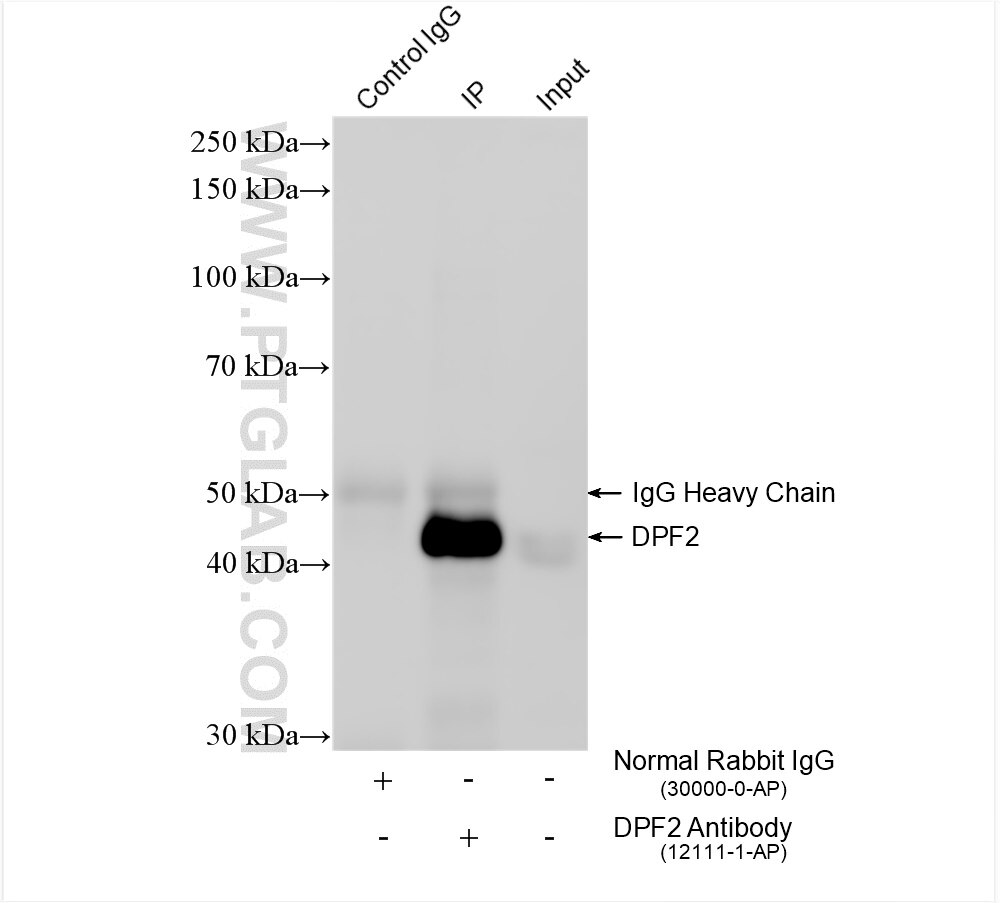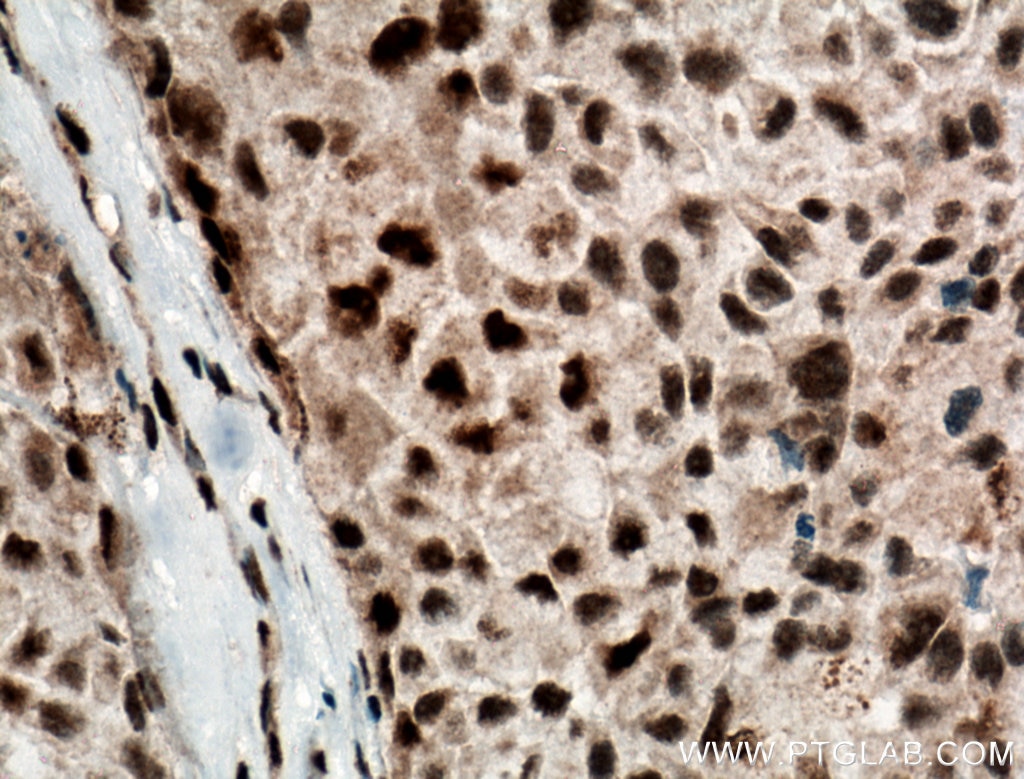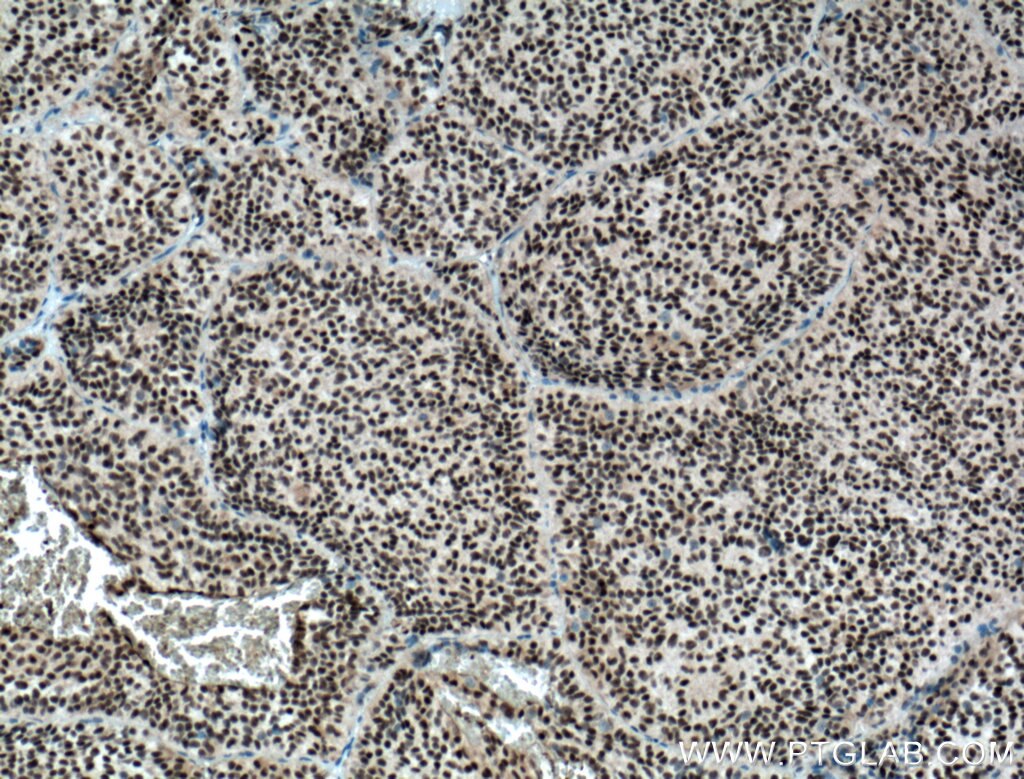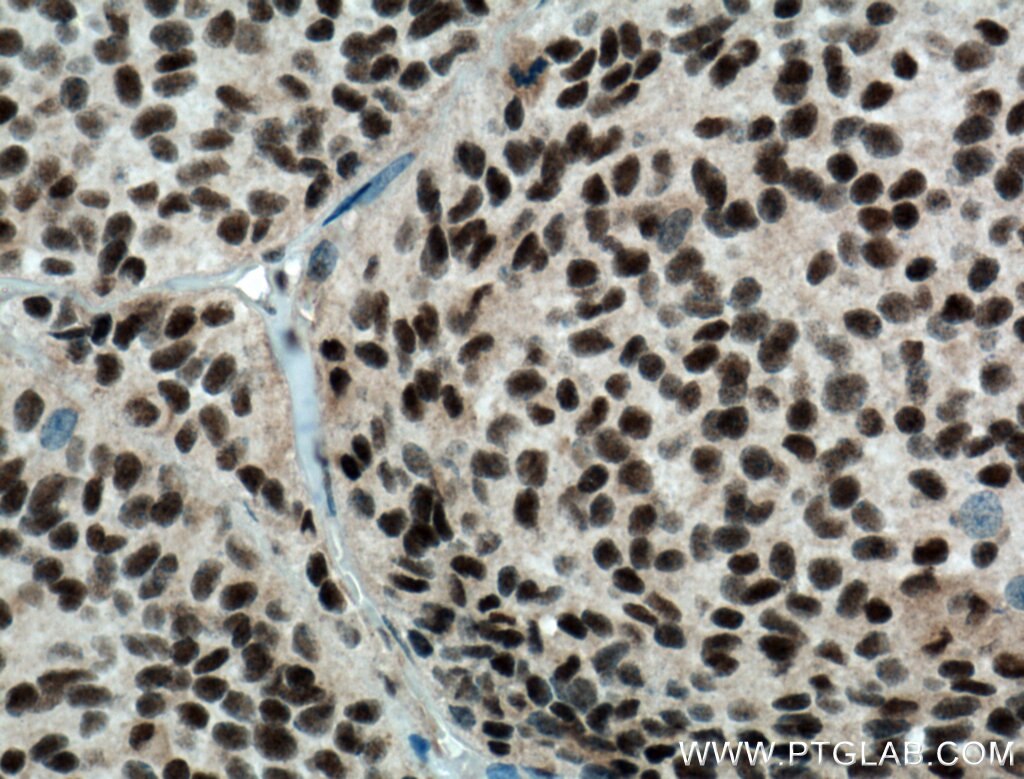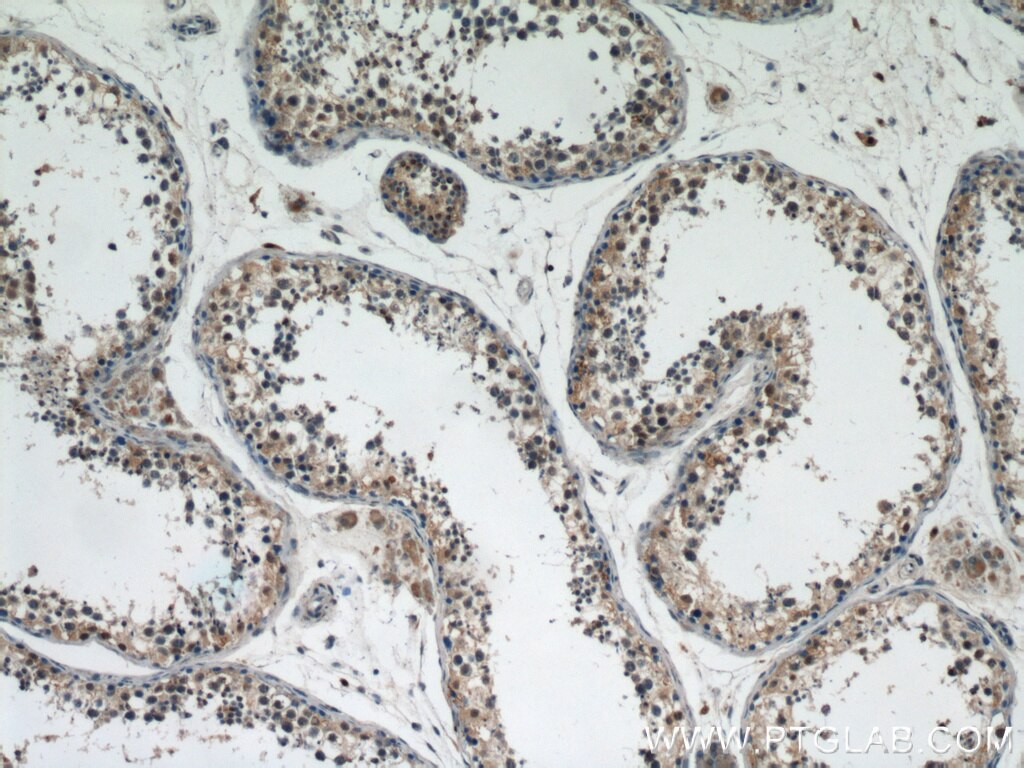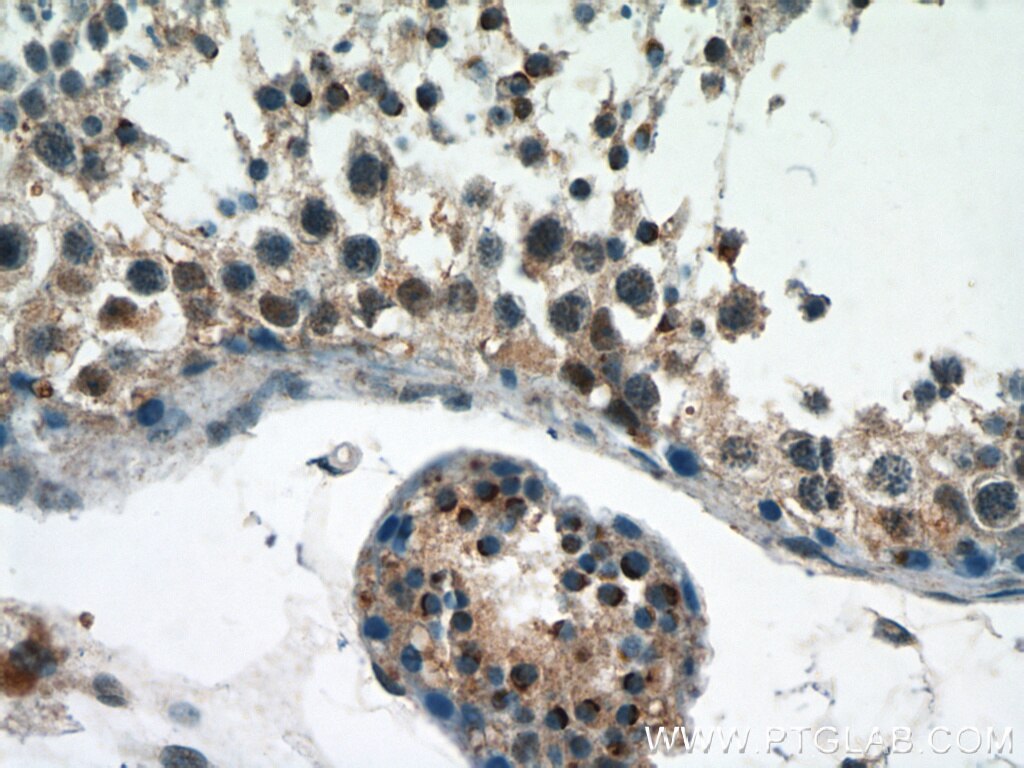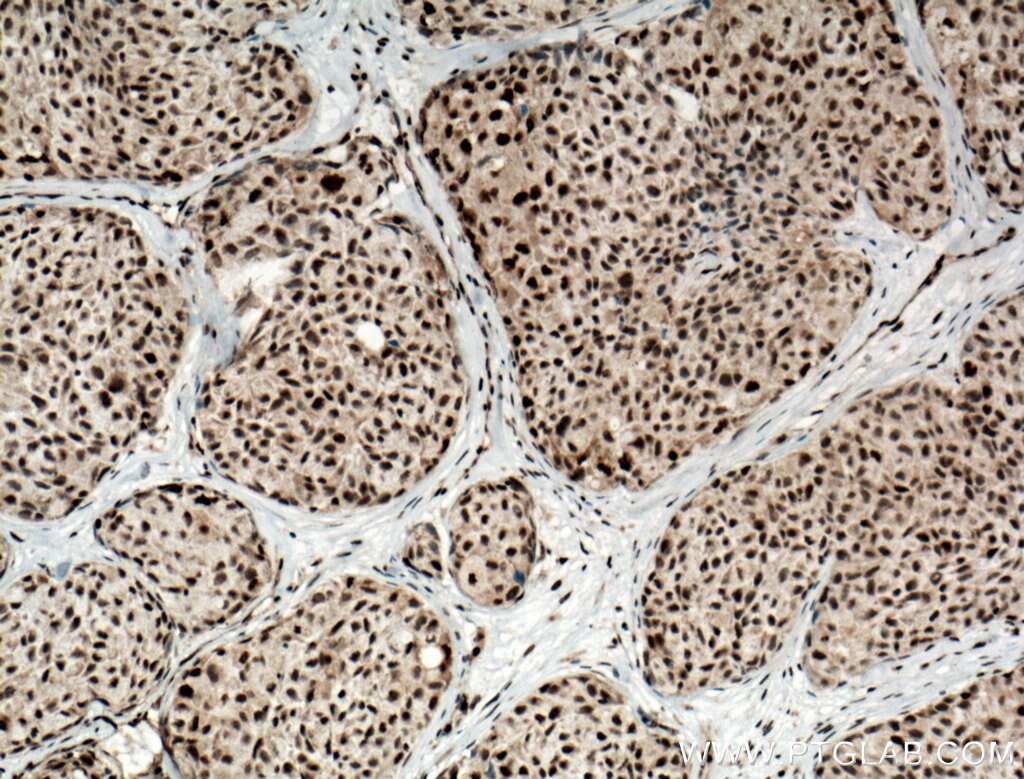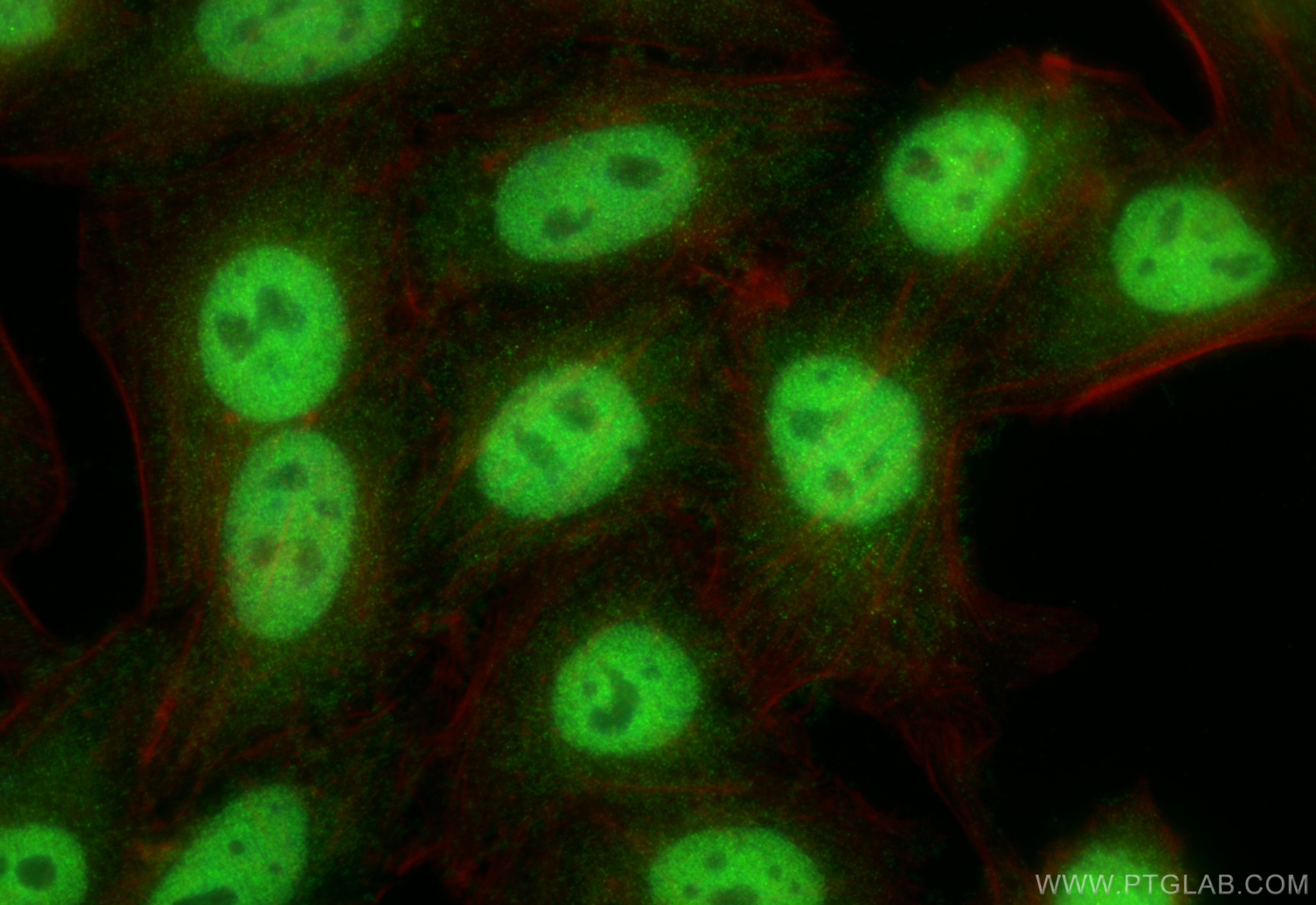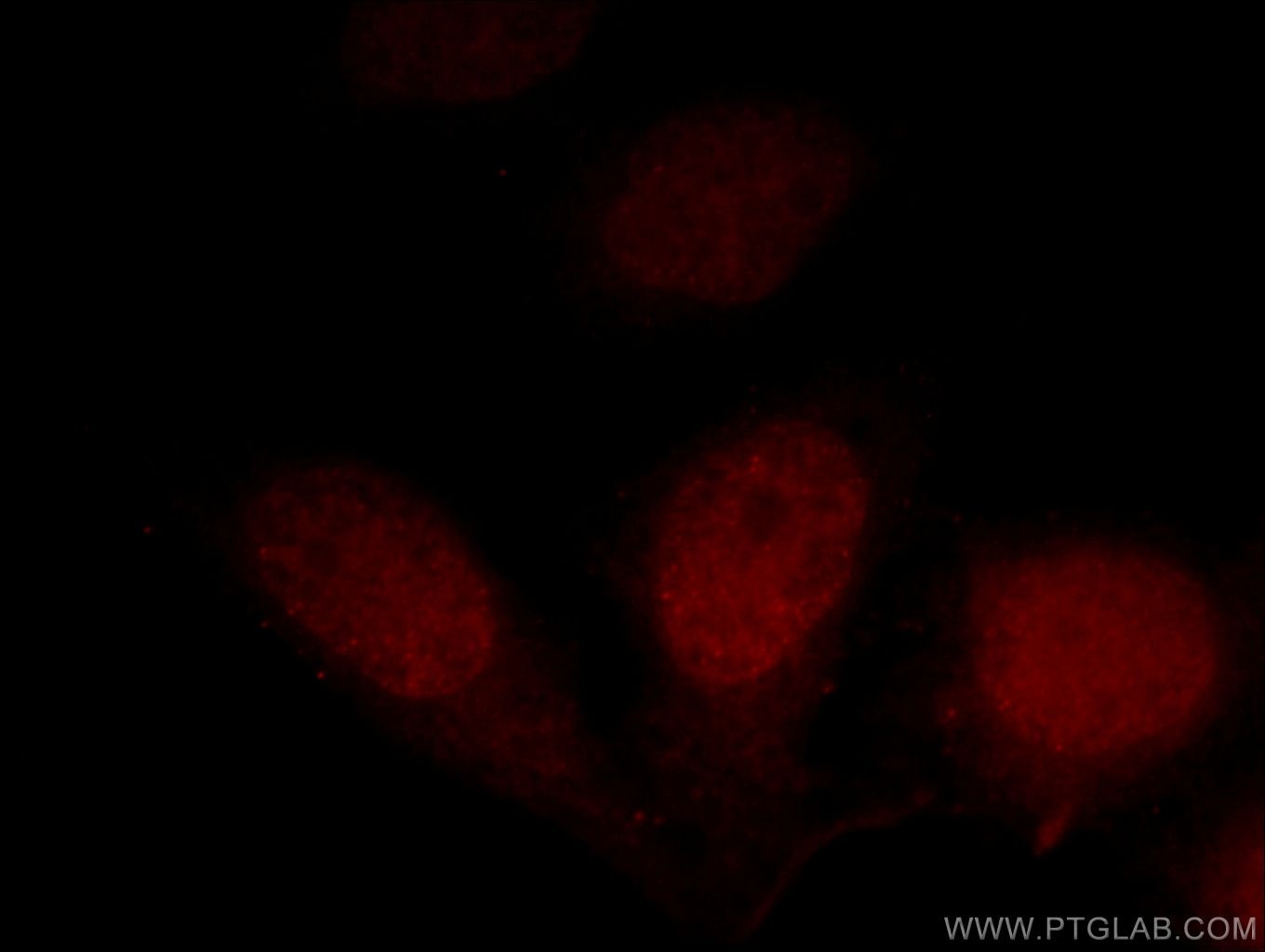- Featured Product
- KD/KO Validated
DPF2 Polyklonaler Antikörper
DPF2 Polyklonal Antikörper für WB, IHC, IF/ICC, IP, ELISA
Wirt / Isotyp
Kaninchen / IgG
Getestete Reaktivität
human, Maus, Ratte
Anwendung
WB, IHC, IF/ICC, IP, ELISA
Konjugation
Unkonjugiert
Kat-Nr. : 12111-1-AP
Synonyme
Geprüfte Anwendungen
| Erfolgreiche Detektion in WB | Jurkat-Zellen, HeLa-Zellen, HepG2-Zellen, K-562-Zellen, Maus-Thymusgewebe, Y79-Zellen |
| Erfolgreiche IP | Jurkat-Zellen |
| Erfolgreiche Detektion in IHC | humanes Lungenkarzinomgewebe, humanes Hypophysenadenom-Gewebe, humanes Hodengewebe Hinweis: Antigendemaskierung mit TE-Puffer pH 9,0 empfohlen. (*) Wahlweise kann die Antigendemaskierung auch mit Citratpuffer pH 6,0 erfolgen. |
| Erfolgreiche Detektion in IF/ICC | HepG2-Zellen, HeLa-Zellen |
Empfohlene Verdünnung
| Anwendung | Verdünnung |
|---|---|
| Western Blot (WB) | WB : 1:1000-1:8000 |
| Immunpräzipitation (IP) | IP : 0.5-4.0 ug for 1.0-3.0 mg of total protein lysate |
| Immunhistochemie (IHC) | IHC : 1:50-1:500 |
| Immunfluoreszenz (IF)/ICC | IF/ICC : 1:200-1:800 |
| It is recommended that this reagent should be titrated in each testing system to obtain optimal results. | |
| Sample-dependent, check data in validation data gallery | |
Veröffentlichte Anwendungen
| KD/KO | See 3 publications below |
| WB | See 7 publications below |
| IHC | See 4 publications below |
| IF | See 6 publications below |
Produktinformation
12111-1-AP bindet in WB, IHC, IF/ICC, IP, ELISA DPF2 und zeigt Reaktivität mit human, Maus, Ratten
| Getestete Reaktivität | human, Maus, Ratte |
| In Publikationen genannte Reaktivität | human, Maus, Ratte |
| Wirt / Isotyp | Kaninchen / IgG |
| Klonalität | Polyklonal |
| Typ | Antikörper |
| Immunogen | DPF2 fusion protein Ag2756 |
| Vollständiger Name | D4, zinc and double PHD fingers family 2 |
| Berechnetes Molekulargewicht | 391 aa, 44 kDa |
| Beobachtetes Molekulargewicht | 44-50 kDa |
| GenBank-Zugangsnummer | BC014889 |
| Gene symbol | DPF2 |
| Gene ID (NCBI) | 5977 |
| Konjugation | Unkonjugiert |
| Form | Liquid |
| Reinigungsmethode | Antigen-Affinitätsreinigung |
| Lagerungspuffer | PBS with 0.02% sodium azide and 50% glycerol |
| Lagerungsbedingungen | Bei -20°C lagern. Nach dem Versand ein Jahr lang stabil Aliquotieren ist bei -20oC Lagerung nicht notwendig. 20ul Größen enthalten 0,1% BSA. |
Hintergrundinformationen
DPF2, also named as BAF45D or UBID4, is a 391 amino acid protein, which belongs to the requiem/DPF family. DPF2 may be a transcription factor required for the apoptosis response following survival factor withdrawal from myeloid cells and might also have a role in the development and maturation of lymphoid cells. DPF2 was recently shown to inhibit the myeloid differentiation of hematopoietic stem/progenitor and acute myelogenous leukemia cells.
Protokolle
| PRODUKTSPEZIFISCHE PROTOKOLLE | |
|---|---|
| WB protocol for DPF2 antibody 12111-1-AP | Protokoll herunterladen |
| IHC protocol for DPF2 antibody 12111-1-AP | Protokoll herunterladenl |
| IF protocol for DPF2 antibody 12111-1-AP | Protokoll herunterladen |
| IP protocol for DPF2 antibody 12111-1-AP | Protokoll herunterladen |
| STANDARD-PROTOKOLLE | |
|---|---|
| Klicken Sie hier, um unsere Standardprotokolle anzuzeigen |
Publikationen
| Species | Application | Title |
|---|---|---|
Anal Chem Deciphering the Interactome of Histone Marks in Living Cells via Genetic Code Expansion Combined with Proximity Labeling. | ||
J Cancer DPF2 overexpression correlates with immune infiltration and dismal prognosis in hepatocellular carcinoma | ||
Front Neurosci BAF45D Downregulation in Spinal Cord Ependymal Cells Following Spinal Cord Injury in Adult Rats and Its Potential Role in the Development of Neuronal Lesions.
| ||
Front Neuroanat The BAF45D Protein Is Preferentially Expressed in Adult Neurogenic Zones and in Neurons and May Be Required for Retinoid Acid Induced PAX6 Expression.
| ||
Biosci Biotechnol Biochem BAF45D knockdown decreases cell viability, inhibits colony formation, induces cell apoptosis and S-phase arrest in human pancreatic cancer cells.
|
